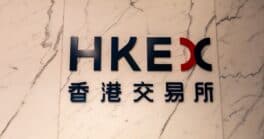Maureen Sullivan, managing director and global head of Supply Chain Finance for MUFG, discusses the trends boosting supply chain finance.
Global Finance: What are the key supply chain financing innovation trends?
Maureen Sullivan: One certitude in supply chain finance [SCF] is an ever-evolving landscape, and banks are always looking for ways to help clients manage the financing of their supply chains, whether it be through continued product development or innovation.
One trend is looking to embed supply chain financing earlier in the cycle—while the product is in transit, or even during the preproduction phase. For example, inventory finance has been a hot topic lately. One of the lessons companies learned during the pandemic was the need to have the right product in the right place, but that meant deploying multiple sourcing venues or having buffer stock. Words like “nearsourcing” and “nearshoring” entered the mainstream vernacular. Companies now facing an impact of inventory buildup on their balance sheet are looking for relief through inventory financing techniques.
Another example might be purchase order financing, but for a product like that to be really scalable, predictability is key. And this is where I think artificial intelligence and machine learning could add value in its ability to analyze vast amounts of data and make more accurate risk assessments. Regulated differently than fintechs, banks need transparency, performance and predictability. So, if a buyer works with five suppliers, for example, and AI could predict that 99.999% of the time whenever this company places a purchase order, it is paid, then perhaps banks might be open to providing a solution.
With the focus on sustainability and environmentally friendly sourcing, green supply chain financing is growing. While companies explore ways to integrate green finance principles into their practices, banks are offering sustainable SCF solutions to provide financing incentives through ESG scoring that drives positive supplier behavior.
GF: How is SCF empowering small and midsize enterprises?
Sullivan: SMEs have a unique set of challenges in managing cash flow. Given their size, it may be more difficult for them to access traditional financing options, such as loans or credit lines. Yet, they need a ready source of liquidity, accessible as needed, without taking on additional debt or other financial liabilities.
A solution like dynamic discounting provides this flexible financing option and allows an SME to receive early payments from customers in exchange for offering a discount on their invoices. It also can foster stronger relationships between SMEs and their customers, making them more attractive to buyers, leading to improved supplier/buyer relationships and the potential for a competitive advantage, especially in industries where quick and efficient transactions are valued.
As a cost-effective way for SMEs to access working capital, they can use these early payments to improve cash flow or meet operational expenses, invest in growth or take advantage of time-sensitive opportunities.
GF: How are you helping clients navigate SCF regulations and compliance?
Sullivan: We operate in a regulated industry, and compliance is one of the key cornerstones of the supply chain ecosystem. Every transaction that passes through our platforms is scanned to ensure alignment with regulatory requirements.
With respect to the regulatory landscape—and considering the Financial Accounting Standards Board [FASB] ruling requiring corporations to disclose key SCF program terms and obligations on their quarterly and annual balance sheet reports—we craft reports that are uploaded to our buyer portal and stored for client use when needed. These reports provide a second data source, like an “audit confirmation” for clients looking to check their numbers prior to reporting. We also developed a series of educational resources to help our clients understand what this FASB update means for their buyer-led programs. On the compliance side, as a bank, we must ensure that all parties involved in any transactions are known to us. US federal law requires financial institutions to follow a “know your customer” [KYC] process that requires us to obtain, verify and record information about each entity or person seeking to establish a business relationship and/or open accounts with us. The goal of KYC is to prevent a bank from being used, intentionally or not, for money laundering, terrorism or other illegal activities. We provide assurance to a company when they work with us that all of the necessary compliance steps have been followed.




